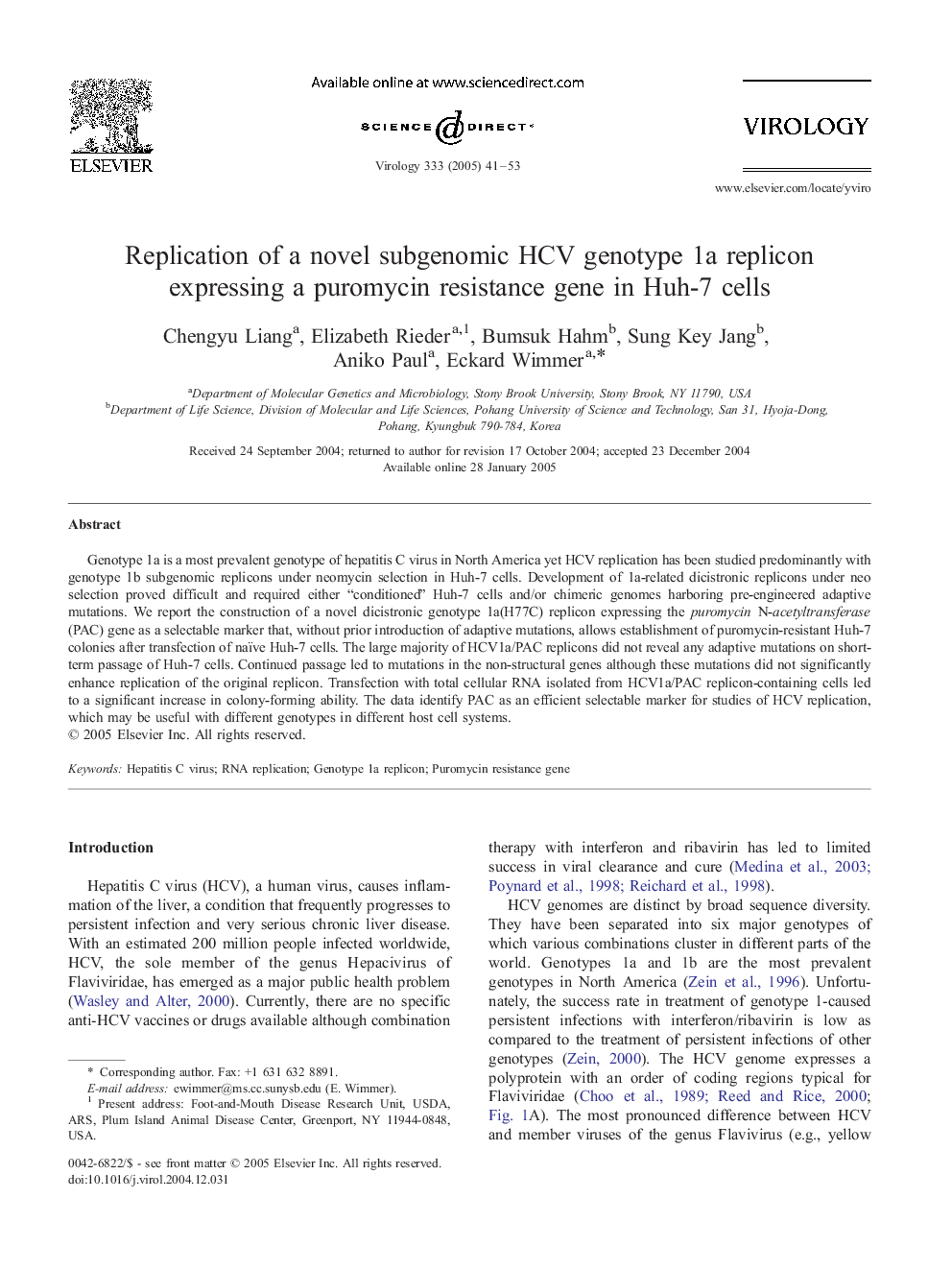| Article ID | Journal | Published Year | Pages | File Type |
|---|---|---|---|---|
| 9287446 | Virology | 2005 | 13 Pages |
Abstract
Genotype 1a is a most prevalent genotype of hepatitis C virus in North America yet HCV replication has been studied predominantly with genotype 1b subgenomic replicons under neomycin selection in Huh-7 cells. Development of 1a-related dicistronic replicons under neo selection proved difficult and required either “conditioned” Huh-7 cells and/or chimeric genomes harboring pre-engineered adaptive mutations. We report the construction of a novel dicistronic genotype 1a(H77C) replicon expressing the puromycin N-acetyltransferase (PAC) gene as a selectable marker that, without prior introduction of adaptive mutations, allows establishment of puromycin-resistant Huh-7 colonies after transfection of naïve Huh-7 cells. The large majority of HCV1a/PAC replicons did not reveal any adaptive mutations on short-term passage of Huh-7 cells. Continued passage led to mutations in the non-structural genes although these mutations did not significantly enhance replication of the original replicon. Transfection with total cellular RNA isolated from HCV1a/PAC replicon-containing cells led to a significant increase in colony-forming ability. The data identify PAC as an efficient selectable marker for studies of HCV replication, which may be useful with different genotypes in different host cell systems.
Keywords
Related Topics
Life Sciences
Immunology and Microbiology
Virology
Authors
Chengyu Liang, Elizabeth Rieder, Bumsuk Hahm, Sung Key Jang, Aniko Paul, Eckard Wimmer,
